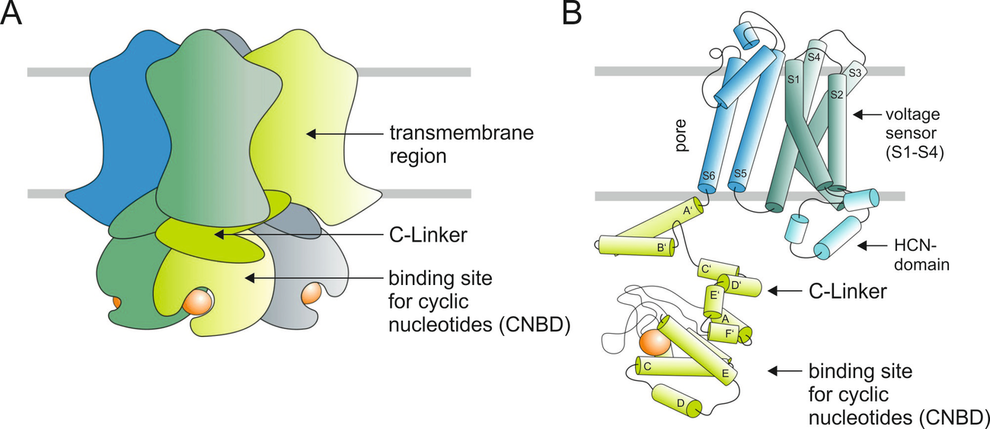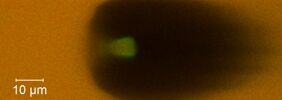HCN channels are activated by hyperpolarizing voltages and modulated by the binding of cyclic nucleotides. They play an important role in generating rhythmic excitation of special heart cells and neurons (pacemaker function). Furthermore they are involved in stabilizing neuronal resting potentials, in generating postsynaptic potentials and in nociception.
To measure ligand binding and channel activation simultanously, we established in our lab the confocal patch-clamp fluorometry (confocal PCF), combining electrophysiological patch-clamp techniques with optical laser scanning microscopy (Biskup et al., 2007; Kusch et al., 2010). To apply the ligand cAMP to the intracellular side of the membrane, we use the inside-out configuration. Quantifying ligand binding requires a fluorscently labeled cAMP (8-DY547-cAMP = fcAMP), which we developed in cooperation with Dyomics (Jena) and BIOLOG LSI (Bremen). Following figure shows a confocal image of a patch pipette containing a HCN2 expressing membrane during application of 1 µM fcAMP.



